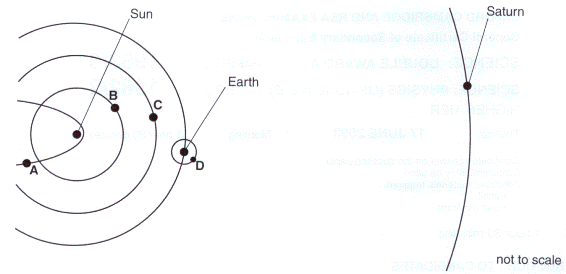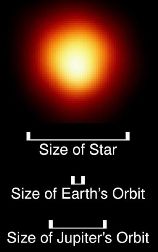1. The diagram represents the orbits of several bodies in our solar system.
(a) Which body is a comet? Choose A, B, C or D. [1] Explain your choice. [1] (b) Gravity is the force which keeps bodies in orbit around planets and stars. (i) Two artificial satellites, not shown on the diagram, are in orbit around the Earth. One of the satellites takes longer to orbit the Earth than the other. Explain why. [2] (ii) The speed of a comet varies as it orbits the Sun. Where will it be travelling quickest? Explain why. [2] (c) Stars evolve in different ways depending on their mass. Betelgeuse is a red supergiant star many times bigger and more massive than our Sun. It has already used up most of the hydrogen 'fuel' in its core. Betelgeuse is on the way to the 'stellar graveyard'.
(i) Describe how stars like our Sun were initially formed. [2] (ii) What reaction, occurring in the core of Betelgeuse, is now coming towards an end? [1] (iii) Suggest three further stages Betelgeuse will go through. (d) Most scientists believe that the Universe is expanding. What evidence supports this view? Use your ideas about red shift and the motion of galaxies in your answer. [3+1] [Total: 16] Hints and Answers coming soon!
|


